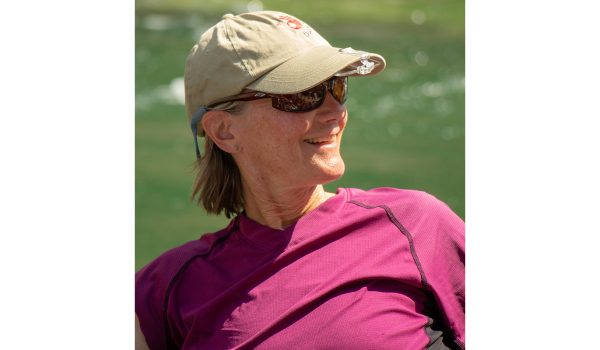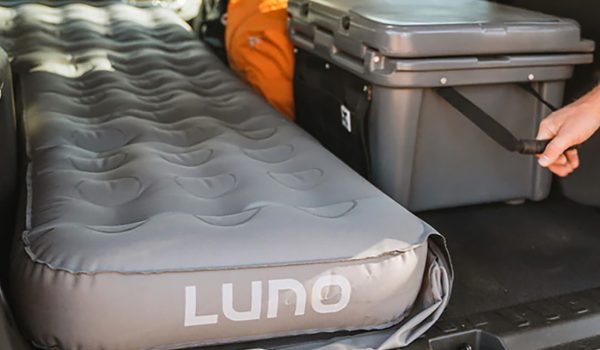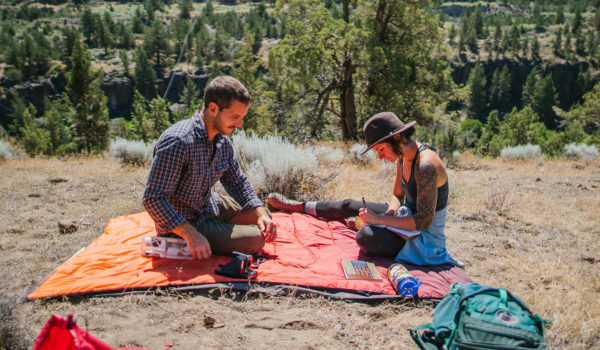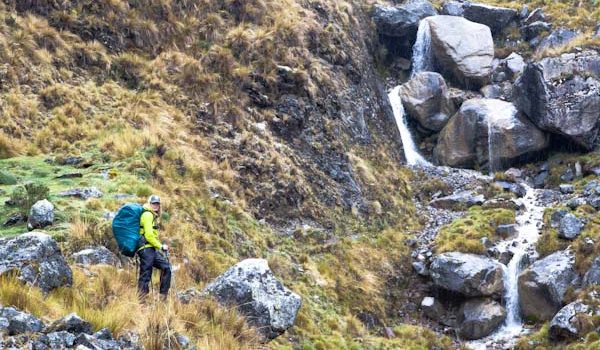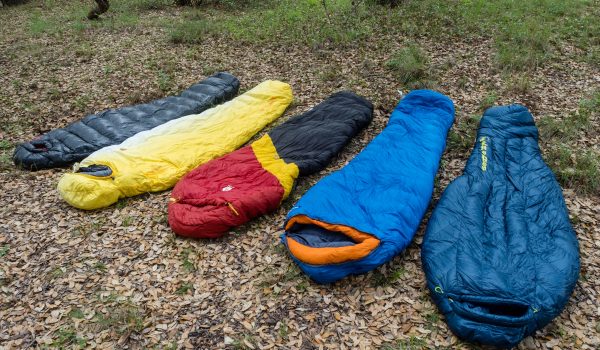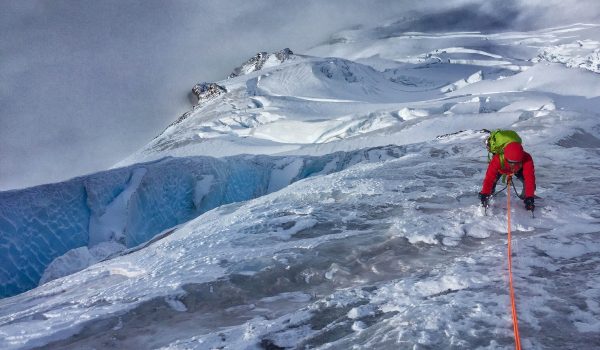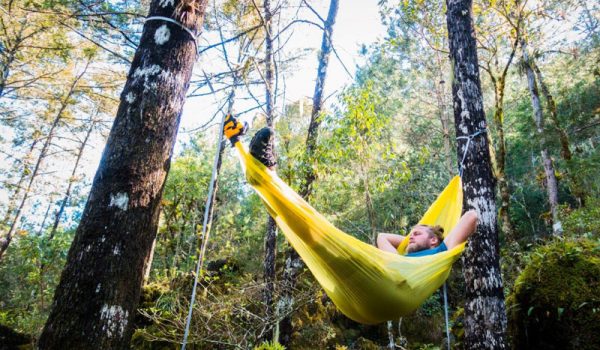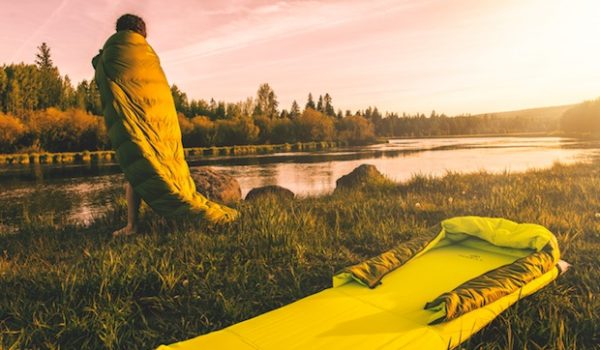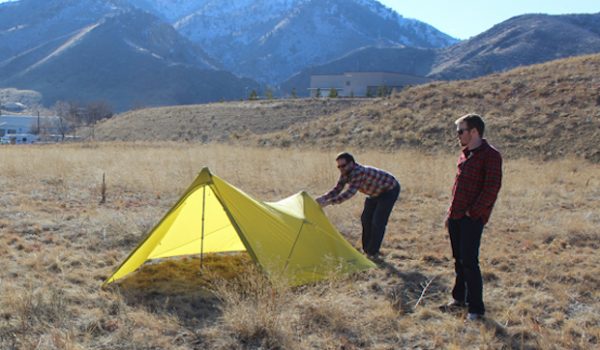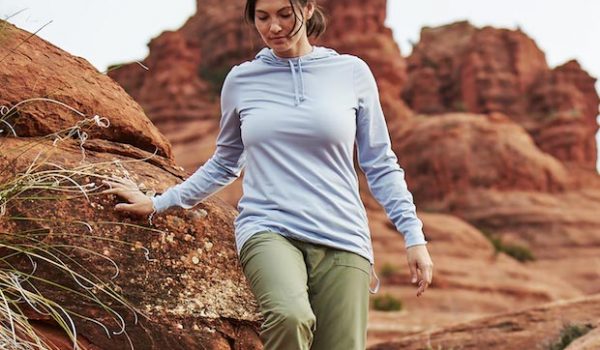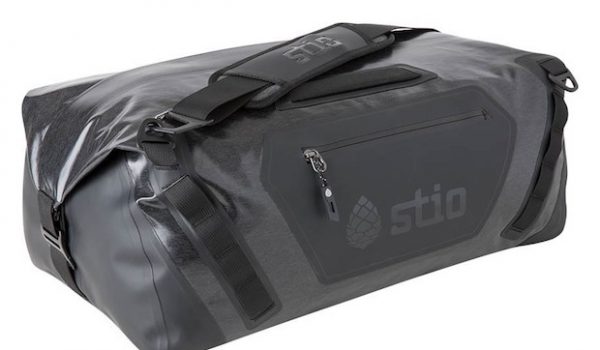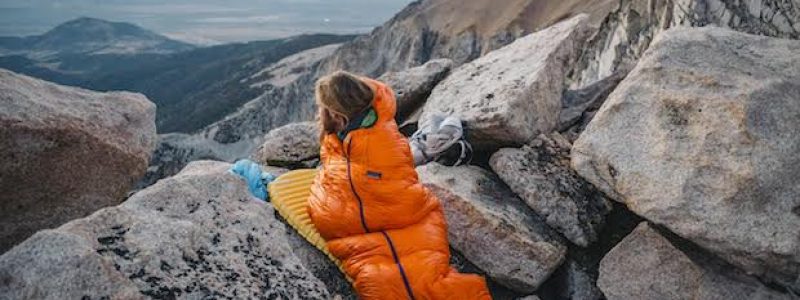
The Best Sleeping Bags
Our expert testers perform extended field tests and rate products on a range of criteria to learn which are the best sleeping bags for warm weather, mild weather, cold weather, and extreme weather.
We split our reviews of the best sleeping bags into Summer Bags, which features lightweight bags for summer camping; 3-season Bags, which are versatile bags that work well in spring and fall as well as in summer at higher elevations; and Winter Bags, which are warmer, more weatherproof bags for expeditions and winter camping.
How to Select the Sleeping Bag For You
The Best Sleeping Bags by: McKenzie Long
Selecting the right sleeping bag for your camping trip will mean the difference between a comfortable night’s sleep and one spent shivering in misery. If you are camping in the cold or the snow, a quality bag might even ensure your survival. For a backpacker, the sleeping bag also takes up a large portion of the space in the backpack, so you want to make sure you are filling it with the right one and not carrying more or less bag than you need. We have developed a simple five step process to help you select the perfect bag for your camping needs. Read through our five steps to determine what it is that you need, then consult our reviews to find the very best products that meet your criteria.
1. Determine Your Average Temperature Rating
The first choice that you will need to make when searching for a sleeping bag is the temperature rating that you will use most often. If you are going to own only one sleeping bag, you will most likely want a versatile bag in the middle temperature range from 10 to -10 degrees. If you are purchasing a bag for a specific objective, such as an Alaskan expedition or a summer fast-pack trip, then a more specialized warm weather or extreme weather bag might be what you are looking for. In general, take into consideration the climate where you live and play most often, and think about the season that you usually camp in, and purchase a bag aimed for that temperature range.
Sleeping bags are sold in categories of temperature ranges, though each company’s range will be slightly different. If you see bags with EN (European Norm) ratings, these temperature ratings will be comparable across brands. The EN rating is an internationally accepted standard, but not all companies use it. The EN test rates bags on two levels: Comfort rating, which is the lowest temperature where a cold sleeper (a typical female) will feel comfortable, and a Lower-Limit rating, which is the lowest temperature that a warm sleeper (an average male) can sleep. Consider whether you usually sleep warm or cold and factor this into your temperature rating decision. Remember, these ratings are just guidelines.
Summer (30F+)
Warm weather bags, or summer bags, are for exactly that: warm weather. These bags will be the smallest and lightest sleeping bags, so if you can get away with one of these, it will be easy to pack and carry. Keep in mind that not all backpacking in the summer is the same: if you are going into the mountains or higher elevations, even in the heart of summer these lightweight bags may not be warm enough. Warm weather models are ideal for mid-summer camping in warm climates and low elevations. See which summer bags we think are the best on the market.
Three-Season (15-29F)
A three-season bag is the sweet-spot for most backpackers. In the 15-29 degree Fahrenheit range, these bags will be warm enough for most summer nights spent in the mountains and crisp fall evenings in the desert, but won’t be stifling if you camp in a warmer location. A three-season model will also be fairly lightweight and packable. This style of bag is ideal for the average backpacker who occasionally ventures into high elevations in summer and also likes to camp during the spring and fall shoulder seasons. Read our reviews to find the best three-season bags available.
Winter (0-14)
Winter bags are more specialized products. These are most often reserved for expeditions to cold places or for winter mountaineering and multi-day backcountry ski trips. These models will be bulkier, heavier, and often come with waterproof shell materials. If you need an extreme weather bag, then you really need it, and having a quality bag can even ensure your survival. We recommend splurging on a high quality model. Winter bags are best in very cold temperatures and high elevations. Check out our reviews of the best winter bags you can buy.
2. Choose the Insulation Type
Once you have decided what temperature range you need, the next big decision is what type of insulation you want. This is a crucial choice. Both synthetic and down insulation have upsides and downsides, so you will need to weigh which characteristics are most important to you and your camping style.
Down
Down is the soft, fluffy plumage of a goose or duck that lies beneath the outer feathers and on the belly of the bird. It insulates by trapping heat in the small air spaces between the fibers of the plumage.
In terms of sleeping bag selection, the basics of down insulation is this: down is warmer for the weight, more compressible, and are functionally longer lasting than synthetic insulation. The downsides are that it is more expensive and loses all insulating properties when wet. The market compensates for this in a few ways: some bags are built with both down insulation and synthetic insulation in the areas that are most susceptible to moisture (see the description of Hybrid insulation below), some down bags come with highly water resistant shell materials which prevents the down from getting wet in the first place, and now many companies have developed treatments to make down more water resistant. For example, the Sea to Summit Spark II comes with treated Ultra Dry-Down. These treatments can increase the cost of your bag, and though they do help extend the moisture resistance of your bag, the water resistant treatments do not make the down waterproof, or even as resistant to moisture as synthetic insulation. Basically, if your bag got drenched, it would no longer keep you warm, even with a special treatment to the down.
That being said, a high quality down bag, such as the Montbell Down Hugger 800, is the preferred choice of most backpackers. Having a high warmth-to-weight ratio and a small packed size is more important to most backpackers than water resistance.
Down Fill Power
When shopping for a down bag, you will notice that most models come with a number after the product name, such as the Rap Neutrino 600 or the Sierra Designs Mobile Mummy 800. This number refers to the down fill power, which is a measurement of the fluffiness of the down that corresponds to the insulating properties. Fill power is measured by testing the number of cubic inches filled by an ounce of down. The higher the fill power, the more warm air can be trapped by an ounce of down, which means it will be warmer for the weight of the insulation. In general, 400-550 is considered medium quality, 600-750 is considered very good, and 750+ is excellent quality. Price usually increases along with fill power.
Down Bag Construction
After you have assessed the fill-power of down bags, it is worth taking note of the construction. In order to prevent the down from sinking into one corner of your bag and keep the insulation spread evenly throughout, down bags are sewn with baffles, which are little pockets that hold the down in place. The way these baffles are sewn can affect the overall warmth. There are two primary methods of constructing down baffles:
Sewn-through
This type of construction is the simplest and most obvious. The bag’s top shell and inner liner are sewn together creating pouches where the down resides. You can usually tell a bag or jacket is made this way because you can feel the seams on the inside and outside. The downside to this method is that no insulation can be on the seam, so it leaves cold spots. The upside is that it is cheaper to produce and lighter weight because it requires less material overall. Sewn-through construction is most often found on ultralight bags, and is generally less warm.
Box-Baffle
Box-style baffles are perpendicular fabric “walls” in between the shell material and inner liner that form boxes to contain the down. This box shape gives the down the most space to loft and it also does not leave any cold spots along seams, so it is the warmest way to add down insulation to a product. It also requires more material and more labor, so it is more expensive and slightly heavier.
Synthetic Insulation
When it comes to man-made insulation, what you need to know is this: synthetic insulation retains its insulating properties when wet, so you are in less danger of freezing if your bag gets soaked. This is because unlike feathers, which clump together when they get wet, synthetic materials maintain their structure and the heat-holding spaces between the filaments. Keep in mind that a wet sleeping bag will never feel warm, but it can still insulate, unlike a down bag which would become useless. This water resistance makes it a little easier for you to care for and use your bag, it is not as delicate and requires less attention. Synthetic insulation will also typically be less expensive.
The cons of synthetic insulation are that it will usually be heavier and less compressible than a down bag of the same temperature rating. It will be bigger and heavier for the warmth that it provides. A synthetic bag will also be less durable, meaning it can withstand less compressions and expansions than a down bag can. You will need to replace a synthetic bag after a few years of regular use, whereas a down bag could last over ten years.
If you spend a lot of time in wet climates, then a synthetic bag is the appropriate choice for you. A synthetic bag might be the best bag to purchase if you are either a beginner backpacker, a car camper who will not be carrying their sleeping bag very far, or are on a budget. These days synthetic bags are still very high quality, so they can provide a comfortable night’s sleep with less of an initial investment.
The construction of a synthetic insulated bag is less important than in a down bag. Synthetic bags are usually constructed with sheets of insulation stitched to the shell.
Hybrid
In an attempt to capitalize on the plus sides of both down and synthetic insulation, some companies have begun to manufacture bags with both types of insulation. Some, like the Kelty Dualist 20, pairs water-resistant down with a thin layer of synthetic insulation on the inside, near the body. This combination results in a middle-of-the-road product that doesn’t excel in any area but may provide the versatility that suits some campers.
3. Consider Shape and Weight
Now that you have decided on temperature rating and insulation type, next think about the shape of your bag. The shape and roominess of a bag affect the weight and comfort, but also affect the warmth. A streamlined bag that fits you well will be the warmest, while bags with extra space may end up with cool pockets of air and feel less warm. However, some people can’t stand the confined feeling of a mummy bag. In that case, a roomier bag or a non-traditionally shaped bag may be a better choice. Keep in mind that the roomier the bag, the larger it usually is, so the weight and packed size will most likely increase.
Rectangular Shape
If you purchase an inexpensive car camping bag, it will most likely be rectangular. These bags are comfortable, bulky, and not very warm. Lacking a hood and a tailored shape, it leaves room for cold air to come in. However, for warm weather front-country camping, this type of bag will be as cozy as a comforter. In some cases, rectangular bags like the Therma-Rest Dorado HD are designed for lightweight summer camping, when the warmth of a hood is not needed so it can be stripped from the bag to reduce weight.
Mummy Shape
The mummy bag, with a hood and narrow shoulder widths that get even narrower towards the foot of the bag, are what most people think of when they envision a modern sleeping bag. This tailored shape aims to reduce air pockets to keep you as warm as possible while also keeping the bag small and compact. Mummy bags usually have a hood and a zipper down one side. While this style works well for most backpackers, some people find this shape too confining and uncomfortable.
Non-traditional shapes
In an effort to make sleeping bags more comfortable, some manufacturers have developed non-traditional shapes for their bags. The spoon-shaped Nemo Nocturne attempts to provide more space and comfort for the sleeper, the Eddie Bauer Flying Squirrel has a similar open, zipperless design to a backpacking quilt, and the Sierra Designs Mobile Mummy is a wearable bag that you can hang out in while drinking hot chocolate by the fire. These shapes are worth considering if you can’t stand the idea of zipping into a mummy bag for the night. There are also double sleeping bags to fit two people like the Big Angus Dream Island 15 or the Sierra Designs Back Country Bed Duo.
Quilts
If you are exploring the world of ultralight backpacking, or are looking for something different, then you may want to consider a quilt. Quilts and quilt-style bags are becoming increasingly popular for backpackers looking to reduce weight and increase comfort. Quilts can be less expensive and substantially lighter than a standard sleeping bag. A quilt is based on the premise that you should not sleep on top of any insulation, because that insulation just gets crushed underneath you and does not provide warmth. So quilts cut out the underside of the bag, where your sleeping pad will be providing insulation from the ground, and therefore cut the weight and bulk of the bag in half. This shape also does away with heavy zippers. Most quilts for backpacking still have a footbox to keep your toes toasty. This open shape is less confining than a standard bag, so can be more comfortable as well as lighter weight.
Women’s Specific
Many companies now manufacture women’s specific models. Compared to a unisex bag, the dimensions will be wider at the hips, narrower at the shoulders, and slightly shorter in overall length. This adjusted shape will better fit most women and can be more efficient in retaining body heat. Since on average women tend to sleep colder than men, women’s bags often have additional insulation in the footbox.
Length
Most unisex sleeping bags come in Regular and Long lengths to accommodate people of different heights. Purchase the bag appropriate for your height, it will be very uncomfortable to squeeze into one that is too short, and one that is too long will be needlessly bulky and leave cold pockets of air by your feet.
4. Identify Features
Next, take a look at the features of your prospective bag. Some features you will want to ensure that you have, others you can skimp. Decide what is most important to you, and look for a bag with those specific qualities.
Hood
Mummy-style bags all come with hoods, but quilts and rectangular-shaped bags will do away with a hood. The hood allows you to pull insulation over your head at night, and it can be cinched down to keep cold air out and warm air in. Wearing a hood while sleeping will retain more body heat—especially good when camping in cold temperatures.
Differentiated Cords
Hoods usually cinch in two directions: horizontally around your shoulders and vertically around your face. By tightening in both directions, you can adjust the hood to perfectly seal all your body heat inside while leaving a breathing space for your face. Most hoods come with 2 cinch cords, one for each direction. The slicker models will have cords of different diameters for these two directions so that you can find the correct cord to tug in the dark. Or one will be on the left and the other on the right. This is not a required feature, but it does enhance ease of use.
Draft Collar
A draft collar is yet another way to ensure that warm air stays in and cold air stays out. This is an insulated flap around the shoulders and face. It is usually found in bags with lower temperature ratings.
Draft Tube
Like the draft collar, the draft tube is a roll of insulation that folds behind the main zipper, so that cold air can’t drift in along that vulnerable cold spot.
Zipper Compatibility
If you ever go camping with a partner or significant other, this is worth paying attention to. Many bags can be zipped together to make one large sleeping bag, which can be comfortable and cuddly. You will want to make sure that one of you have a left-zip and the other of you have a right-zip, otherwise one of you will have a hood in your face. You also want to make sure the zippers have the same size coils so that the zippers physically work together. Most bags come with zippers in one of two sizes, so it shouldn’t be too difficult to find two that fit together. Remember that zipping two bags together reduces the ability to cinch the bag down around your face and can leave gaps for cold air to come in. It can also be that you may prefer to have the zipper on one side or the other.
Stash Pocket
Some bags come with a small zippered pocket near the head of the bag. This can be a convenient place for your headlamp, phone, lip balm, or contact case.
Sleeping Pad Compatibility
Most bags can be laid on top of any sleeping pad, and you can call it good. Some companies make bags and pads designed to work together with features like a sleeve or loops on the underside of the bag that the pad can slip into. This holds the bag in place and prevents you from rolling off your pad. Sometimes these bags will skip the insulation on the bottom, like a quilt, because the compatibility ensures that your pad will be in the correct place to insulate you from the ground. For some this is less comfortable because it restricts your ability to roll around and can stretch the edges of the bag and leave cold gaps.
5. Consider Price
As always, the last important consideration when purchasing outdoor gear is price. We don’t always recommend buying the least expensive product because it might skimp on important features, and we also don’t suggest always buying the most expensive item, which sometimes isn’t worth the cost or provides more than you need. With sleeping bags, price will vary depending on some of the choices you have made. The warmer the bag (meaning the colder or lower the temperature rating) the more insulation it requires, thus the more expensive it becomes. So if you need an extreme weather bag you will be looking at a more costly purchase. Likewise, insulation type usually affects cost. If you choose a down bag, you will likely have to pay more than for a synthetic model of the same temperature rating. Don’t forget to factor the purchase of additional accessories into your budget like a sleeping pad, which is very nice to have, or a sleeping bag liner, which is optional. Most bags will come with a stuff-sack, though they can often be sub-par. Third party high quality stuff-sacks are available with compression straps to compress your bag into a smaller package. Read through our reviews of the best sleeping bags, and it is our hope that you will find a product that meets your criteria and budget.
Best in Class
ZPacks Classic Sleeping Bag
3-Season Sleeping Bags (15F-29F), Hiking & Camping & Sleeping Bags
When reviewing the specs and tester opinions of all the sleeping bags in this review, we realized that the Z Packs Classic Sleeping bag has the highest warmth-to-weight ratio of all the bags in our three-season test. It is a backpacking quilt that lacks a hood, but zips fully closed along the back. It is also overstuffed with down, creating a luxurious cocoon of warmth. Both the Therm-a-Rest Vesper and the Feathered Friends Tanager come really close to the warmth-to-weight ratio of the ZPacks bag, being slightly lighter weight but also a tad less warm. The Z Packs bag is less expensive than those other two contenders, making it a better deal overall. As a result, the Z Packs wins our Best in Class award by a single point. We love this thing.
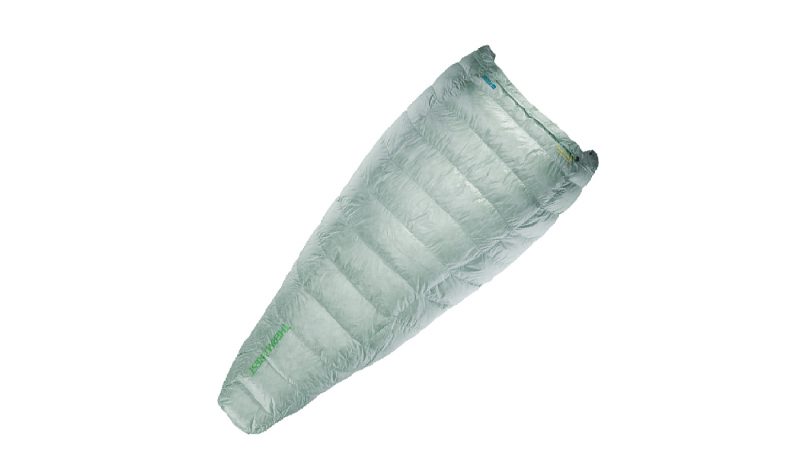
It was a very close call between the ZPacks Classic Sleeping Bag and the Therm-a-Rest Vesper for our Best in Class award. Both are lightweight hoodless backpacking quilts and both compress to a very small size. The Vesper comes with a compression sack that cinches it down to roughly the size of a water bottle. Ultimately the ZPacks bag won by one point because it is a little bit warmer, but we love the Vesper. It does not have a zipper and features a fully open back with a huge draft collar with a secure snap. It is packed with Nikwax Hydrophobic down, and we did put this to the test. After getting doused by rain and remaining warm in the Vesper, we can vouch that this water-resistant coating works.
Best for Ultralight Thru-Hiking and Mountaineering
Feathered Friends Tanager
3-Season Sleeping Bags (15F-29F), Hiking & Camping & Sleeping Bags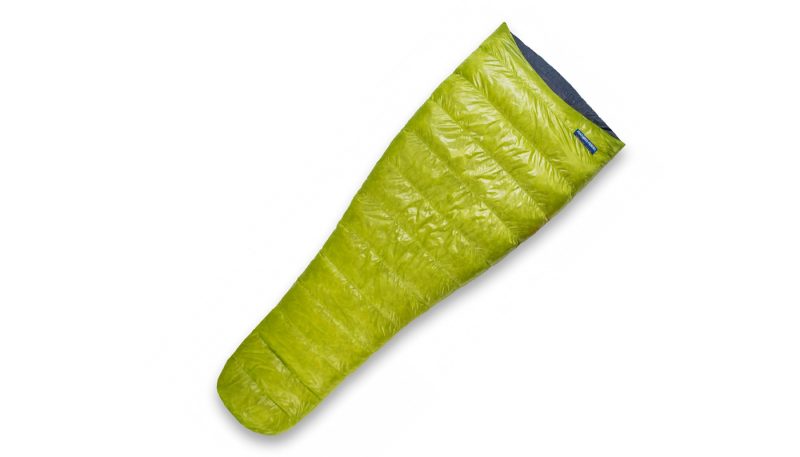
For the ultralight backpacker, thru-hiker, or mountaineer, the Tanager is a blessedly simple and lightweight product. As with all Feathered Friends products it is well constructed and filled with high quality, compressible down. This was the lightest product in our three-season test, weighing only 1 lb., 2.6 oz for a regular length. It manages this low weight by eliminating the hood and zippers, leaving just an insulated tube to sleep in. It is also constructed with a featherweight 7-denier shell. For the weight-conscious, this bag is hard to beat.
Best In Class
Feathered Friends Flicker 30 YF
Hiking & Camping, Sleeping Bags & Summer Sleeping Bags (30F+)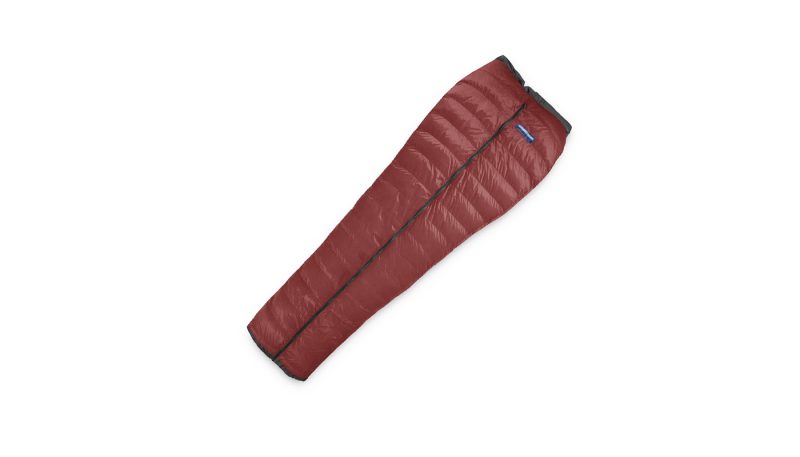
The Feathered Friends Flicker YF 30 is hands-down our favorite summer sleeping bag. It transitions from a well-ventilated open quilt in warmer weather to a tube-style sleeping bag (albeit without a hood) when the temperature drops. In addition to being versatile, it is warmer, lighter, and more compressible than any of the other 30F rated bags in our test. And to polish off this well-designed product is the YFuse Pertex Quantum face material, which is more down-proof and water resistant than most other fabrics, meaning that this bag is likely to last a while.
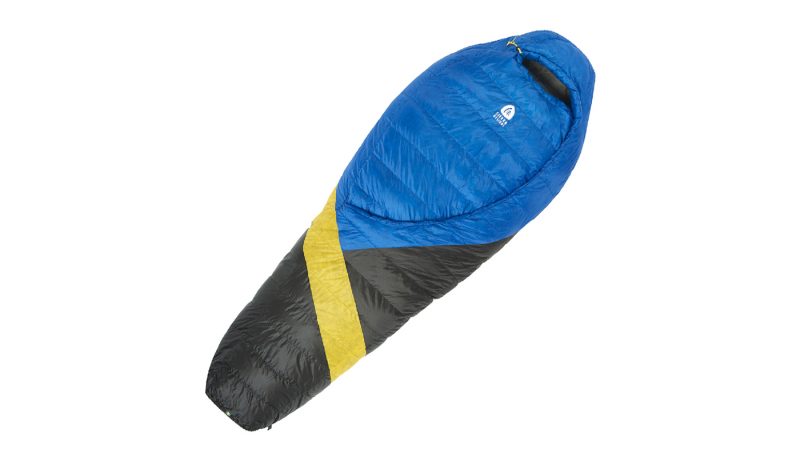
The Sierra Designs Cloud 800 is a unique zipperless bag. Instead of a typical side-zip, it has a blanket fold on the front that tucks around a sleeper and keeps them warm. The fold can be tossed aside for more airflow in warmer temperatures. Rated for 35 degree nights and weighing 1 lb 7 oz, this bag was a top contender in our summer sleeping bag test. Ultimately, we think the Cloud is an excellent choice for someone in the market for a lightweight summer bag, but who doesn’t want to throw down the cash for an expensive Feathered Friends bag.
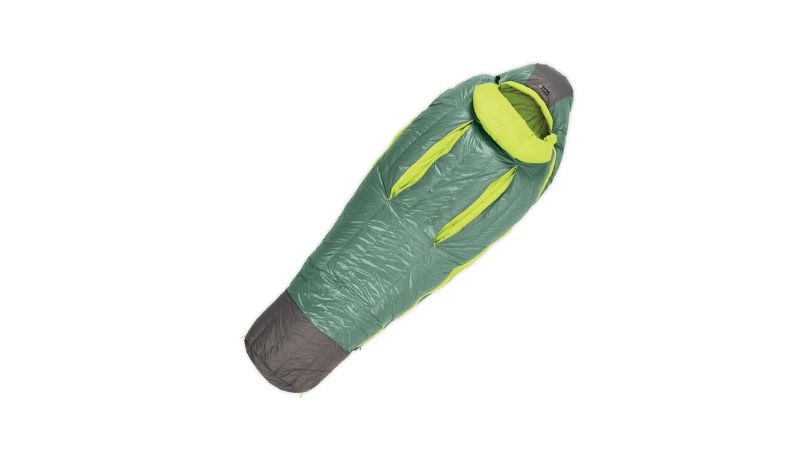
The Nemo Ramsey 30 is a fairly standard summer sleeping bag filled with features. To our surprise, we love the blanket fold draft collar which tucks in around the chin and neck for cozy comfort. Thermo gill vents and a full-length zipper allow for easy ventilation if the weather is warm, the stash pocket provides a convenient place to store a headlamp or a contact case, and waterproof/breathable material on the hood and footbox protect from condensation and weather. All of this adds up to one of the heaviest bags in our summer sleeping bag review, but this is still an excellent option for those who prioritize comfort.
Best In Class
Feathered Friends Snowbunting EX 0 Sleeping Bag
Hiking & Camping, Sleeping Bags & Winter Sleeping Bags (0-14F)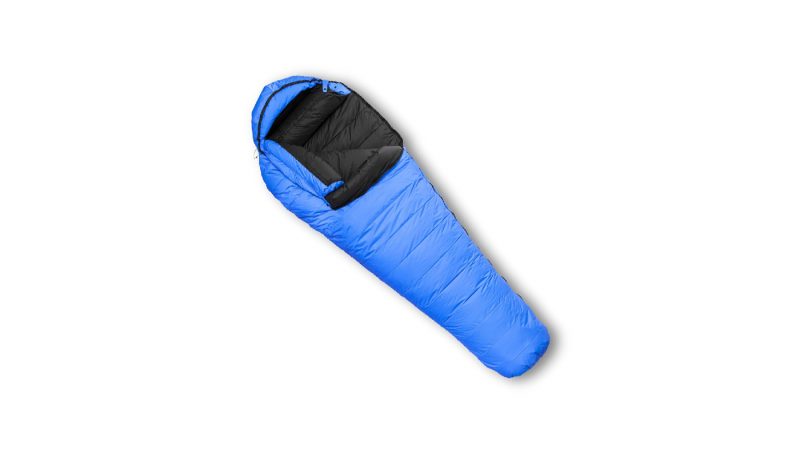
The 900+ fill down keeps the Feathered Friends Snowbunting EX lightweight and compressible so that it is perfect to bring on human-powered winter adventures while the waterproof/breathable Pertex Shield EX shell withstands occasional moisture and condensation dripping onto the bag. The Snowbunting is extra roomy for a size regular, which allows the sleeper to stash boot liners, gloves, and socks into the bag with them so that they can warm up and dry out overnight rather than freeze. This is key for winter mountaineering or overnight ski touring. The drawback is that smaller people might find that this bag to be too drafty. Our overall impression was that this was the most cleverly designed and well-featured bag for those who like to be in the mountains in winter.
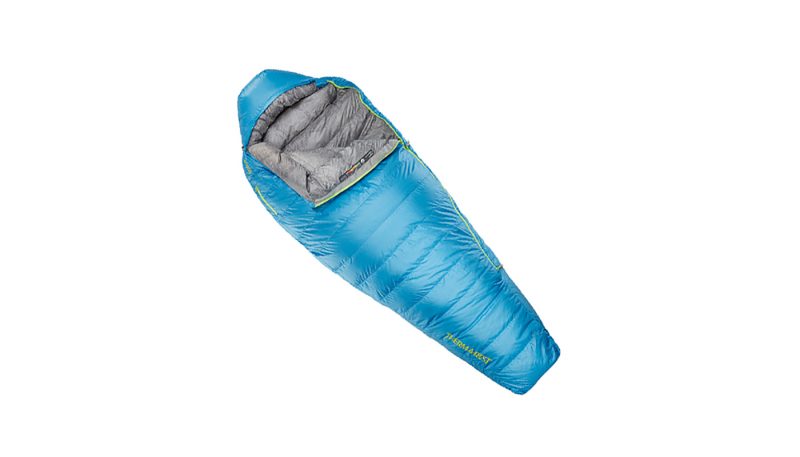
Sleeping in the Questar is a dreamy experience. It feels warm and light, and pads around the body in all the right places. Every tester that used this bag remarked on its impressive comfort. It even has a stash pocket on the outside, providing extra convenience. At 2 lbs 13.8 oz, it is the third lightest down winter bag that we tested, so it can be comfortably carried on human-powered adventures. Nikwax hydrophobic down increases its performance when up against condensation gathering inside a tent. Though this bag did not earn the same score as the award-winning Feathered Friends Snowbunting EX, the Questar is half the price, making it an excellent deal for such a high-quality product.

For ski tourers and mountaineers who want a lightweight winter bag for human-powered adventures, the Sierra Designs Nitro serves that need. We recommend pairing it with a lightweight, high R-value sleeping pad such as the Therm-a-Rest XTherm to get the most out of it. The Nitro is not the warmest or the most waterproof bag in our review, but it performed well for our testers even in snowy and stormy conditions. The Feathered Friends Snowbunting is more tailored to the serious mountaineer, but the Nitro wins in the weight category, contains hydrophobic treated down, and is more affordable, making it an attractive option for the weight-conscious and cost-conscious customer.







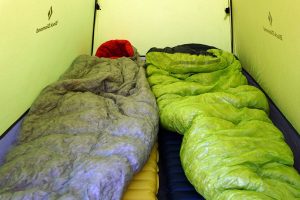
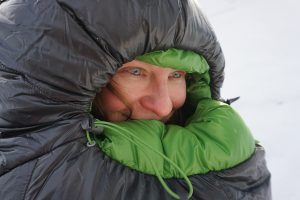
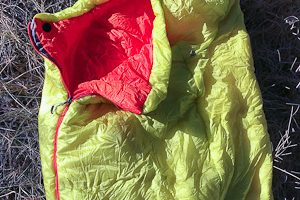
 89
89 